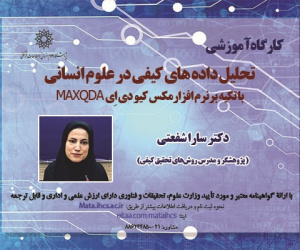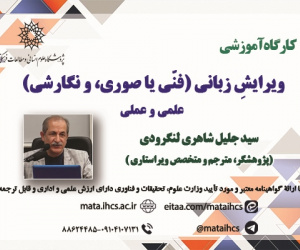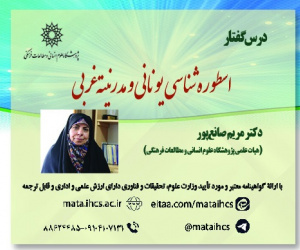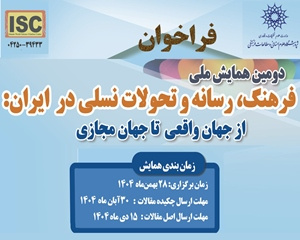ارزیابی فراداده های اشیاء یادگیری موجود در مخازن سازمانی دانشگاه های علوم پزشکی ایران براساس استاندارد فراداده شیء یادگیری (مقاله علمی وزارت علوم)
درجه علمی: نشریه علمی (وزارت علوم)
آرشیو
چکیده
هدف: پژوهش حاضر با هدف ارزیابی و اعتبارسنجی فراداده های اشیای یادگیری مخازن سازمانی دانشگاه های علوم پزشکی ایران براساس استاندارد فراداده شیء یادگیری انجام شد.روش: در پژوهش حاضر از روش مشاهده و پیمایش استفاده شده است. تعداد 16 مخزن مربوط به دانشگاه های علوم پزشکی ایران شناسایی شد. سپس به شناسایی عناصر فراداده ای اشیای یادگیری و استانداردهای مورداستفاده در حوزه سازمان دهی اشیای یادگیری الکترونیکی در مخازن سازمانی پرداخته شد. عناصر شناسایی شده از اشیای یادگیری الکترونیکی مخازن سازمانی دانشگاه های علوم پزشکی ایران، با سیاهه وارسی عناصر استاندارد فراداده شیء یادگیری مطابقت داده شد و میزان همپوشانی آن ها برای توصیف اشیای یادگیری الکترونیکی در مخازن سازمانی مشخص شد. در بخش بعدی پژوهش که مربوط به اجرای فن دلفی و اعتبارسنجی عناصر فراداده ای اشیای یادگیری در مخازن سازمانی دانشگاه های علوم پزشکی ایران است، پرسشنامه طراحی شده برای جامعه آماری که شامل متخصصان حوزه سازمان دهی اطلاعات و متخصصان حوزه یادگیری الکترونیکی بود، طی دو مرحله ارسال گردید.یافته ها: یافته ها نشان داد بسیاری از عناصر استاندارد فراداده شیء یادگیری، پوشش داده نمی شوند و از تعداد 60 عنصر استاندارد فراداده شیء یادگیری، 25 عنصر (41 درصد) از مجموع عناصر فراداده ای شناسایی پوشش داده شده است. عناصر فراداده ای مربوط به مشخصات چرخه حیات اشیای یادگیری الکترونیکی با (66 درصد)، بالاترین میزان مطابقت و عناصر مربوط به دسته عمومی شیء یادگیری با 6 مورد (60 درصد) از 10 ویژگی در درجه دوم مطابقت است. در دسته یادداشت در استاندارد فراداده شیء یادگیری، میزان انطباق صفر است. در ردیف های مربوط به توصیف فرا فراداده و حقوق اشیای یادگیری، میزان مطابقت با یک مورد گزارش شده است. یافته های به دست آمده از دورهای دلفی نشان داد که در قسمت تعیین میزان اهمیت عناصر فراداده ای برای توصیف اشیای یادگیری الکترونیکی که با مقیاس لیکرت (بسیار زیاد تا بسیار کم) طراحی شده است، نتیجه مطلوب در مورد حضور عناصر فراداده ای در سازمان دهی و ذخیره سازی اشیای یادگیری الکترونیکی در مخازن سازمانی دانشگاه های علوم پزشکی ایران با 89/73 درصد فراوانی به دست آمد. در مورد تعیین مطابقت عناصر فراداده ای توصیف اشیای یادگیری الکترونیکی با عناصر استاندارد فراداده شیء یادگیری که در پرسشنامه مطرح شد، با 97/24 درصد بالاترین میزان مطابقت ارائه شده است.نتیجه گیری: در ایجاد طرح واره و دستورالعمل های فراداده، باید مطمئن شد که با استاندارد انتخاب شده، مطابقت دارند. نتایج حاصل نشان داد که استاندارد فراداده شیء یادگیری با گستردگی و جامعیت و مقبولیتی که دارد، می تواند برای سازمان دهی اشیای یادگیری الکترونیکی در مخازن سازمانی دانشگاه های علوم پزشکی ایران به عنوان استاندارد مناسب برگزیده شود. در ارزیابی پرسشنامه درصد محدودی از متخصصان با موارد ارائه شده مخالف بودند و ارزیابان با تفاوت معنادار و با فاصله زیاد با موارد مطرح شده موافق بودند و تأیید آن ها اعتبار بیشتری به پژوهش بخشیده است.Evaluation of Learning Objects Metadata in the Organizational Repositories of Iranian Universities of Medical Sciences based on the Learning Object Metadata Standard
Purpose: This research aimed to evaluate and validate the metadata of learning objects in organizational repositories of Iranian medical sciences universities based on the standard of learning object metadata.Method: This research was conducted with a thorough approach, utilizing observation and survey methods. We identified sixteen repositories related to Iranian universities of medical sciences. The metadata elements of learning objects and the standards used in organizing electronic learning objects in these repositories were meticulously identified. The elements from the electronic learning objects of the institutional repositories of Iranian medical sciences universities were then matched with the checklist of standard learning object metadata elements, and their overlap was determined to describe the electronic learning objects in the organizational repositories. The next part of the research involved the implementation of the Delphi technique and the validation of the metadata elements of the learning objects in the organizational repositories of the universities of medical sciences in Iran. A questionnaire was designed for the statistical community, which included specialists in the field of information organization and specialists in the field of e-learning, and was sent out in two rounds.Findings: The findings showed that many of the standard metadata elements of the learning object are not covered, and out of the 60 standard metadata elements of the learning object, 25 elements (41%) are covered. Metadata elements related to the life cycle characteristics of electronic learning objects had the highest degree of matching (66%). In comparison, elements related to the genera category of learning objects with six items (60%) of 10 features had the second highest degree of matching. The compliance rate is zero in the Annotation category of the metadata standard of the learning object. The degree of compliance is reported for one item for the description of metadata and the rights of learning objects. The findings from the Delphi rounds showed that in determining the importance of metadata elements for describing e-learning objects, which was designed with a Likert scale (very large to very low), the favourable result was about the presence of metadata elements in the organization. The storage of electronic learning objects in the institutional repositories of Iranian medical sciences universities was obtained with 89.73% frequency. The findings from the first and second rounds of Delphi about determining the correspondence of the metadata elements of the description of electronic learning objects with the standard metadata elements of the learning object showed that 97.24% had the highest correspondence.Conclusion: The potential impact of this research is significant. The findings suggest that in creating metadata schemas and guidelines, it is crucial to ensure their compliance with the chosen standard. The learning object metadata standard, with its breadth, comprehensiveness, and acceptability, emerges as a suitable standard for organizing electronic learning objects in the organizational repositories of Iran's universities of medical sciences. The evaluation of the questionnaire revealed that a limited percentage of experts disagreed with the presented items. However, the evaluators largely agreed with the mentioned items, enhancing the credibility and potential impact of the research.








